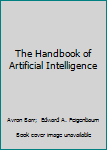The Handbook of Artificial Intelligence
Select Format
Select Condition 
Book Overview
409 pages This description may be from another edition of this product.
Format:Paperback
Language:English
ISBN:0201118114
ISBN13:9780201118117
Release Date:September 1986
Publisher:Addison Wesley Publishing Company
Length:409 Pages
Weight:1.30 lbs.
Customer Reviews
1 rating
Good overview of GOFAI
Published by Thriftbooks.com User , 22 years ago
This is the first volume of a 3-volume set published in the early 1980's and thus could be thought of as a summary of what was known at the time in the field of artificial intelligence (A.I.). Now sometimes referred to as "GOFAI" for "good ole-fashioned artificial intelligence", this set of books can still be referred to profitably by anyone curious about the applications of artificial intelligence. Indeed, many of the algorithms discussed in this volume are still being used, and very robustly, in current implementations of artificial intelligence. A lot has happened since this volume was published, especially in the area of chess playing and logic programming, but there are many sections of the book that are still up-to-date. After a brief introduction to A.I. in chapter one, chapter two overviews the use of search algorithms for intelligent problem solving. The emphasis initially is on the problem representations that form the basis of search techniques, such as state-space and problem-reduction representations. Game tree representations are also discussed. The algorithms that implement the problem representations are then treated. If the search space is viewed merely syntactically, these are called "blind search" algorithms, which are distinguished from "heuristic" methods, which exploit various structural information about the problem in order to limit the search. Examples of blind search methods that are discussed include breadth-first, uniform-cost, depth-first, and bidirectional search. Examples of heuristic methods discussed are ordered state-space, bidirectional, and the famous A*-algorithm, the latter of which is still finding considerable use in new applications of A.I. Examples of game tree search that are covered include the minimax procedure, the negmax formalism, and alpha-beta pruning. There is discussion on the use of heuristics in game tree search, but this part is out-of-date due to the advances made in chess playing, checkers, etc, since this volume was published. Chapter three is an overview of knowledge representation in A.I. The author takes a pragmatic approach to the nature of knowledge and intelligence, and defines the "representation of knowledge" as a combination of data structures and interpretive procedures that will lead to what he calls "knowledgeable" behavior. A book needs a reader before it could be considered knowledge, argues the author. He calls this whole enterprise "experimental epistemology" , which endeavors to create programs that exhibit intelligent behavior. The chapter gives an overview of the knowledge representation schemes used in A.I. and discusses their uses and shortcomings. Also, the tension between the advocates of declarative versus procedural knowledge representations is discussed. Declarative systems are more logical/mathematically based, and were exemplified by theorem-provers based on logical resolution. The procedural approach emphasized a more directed approach to the problem of infer






